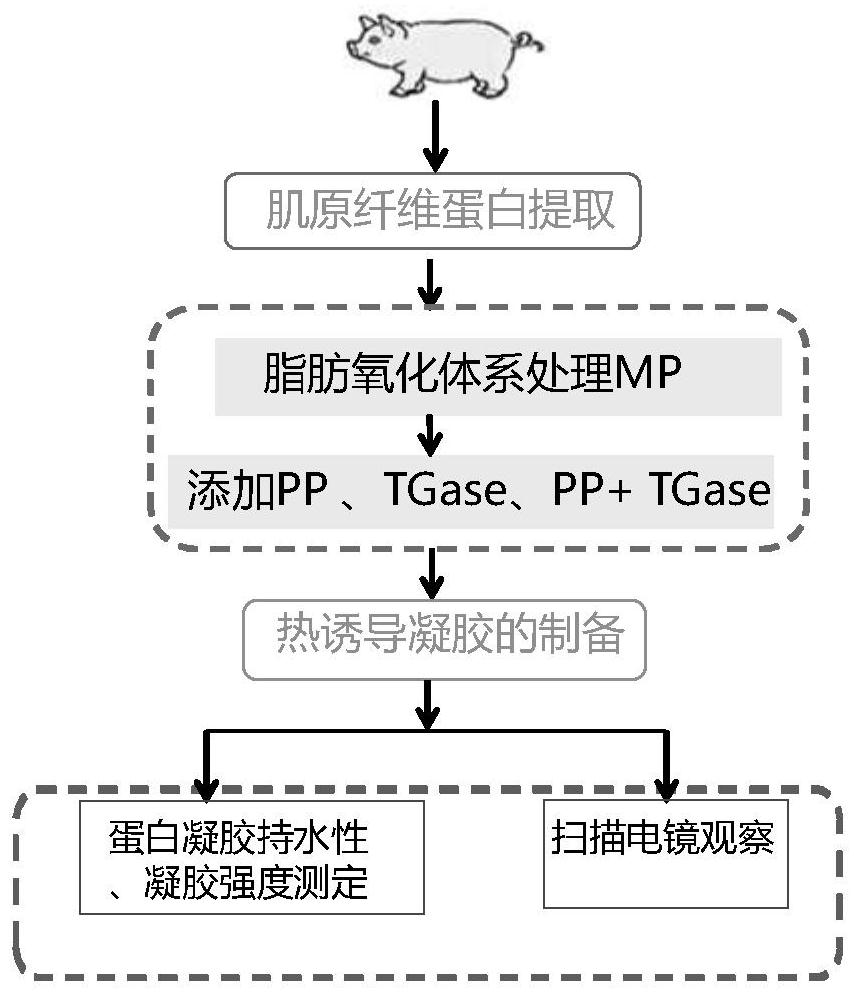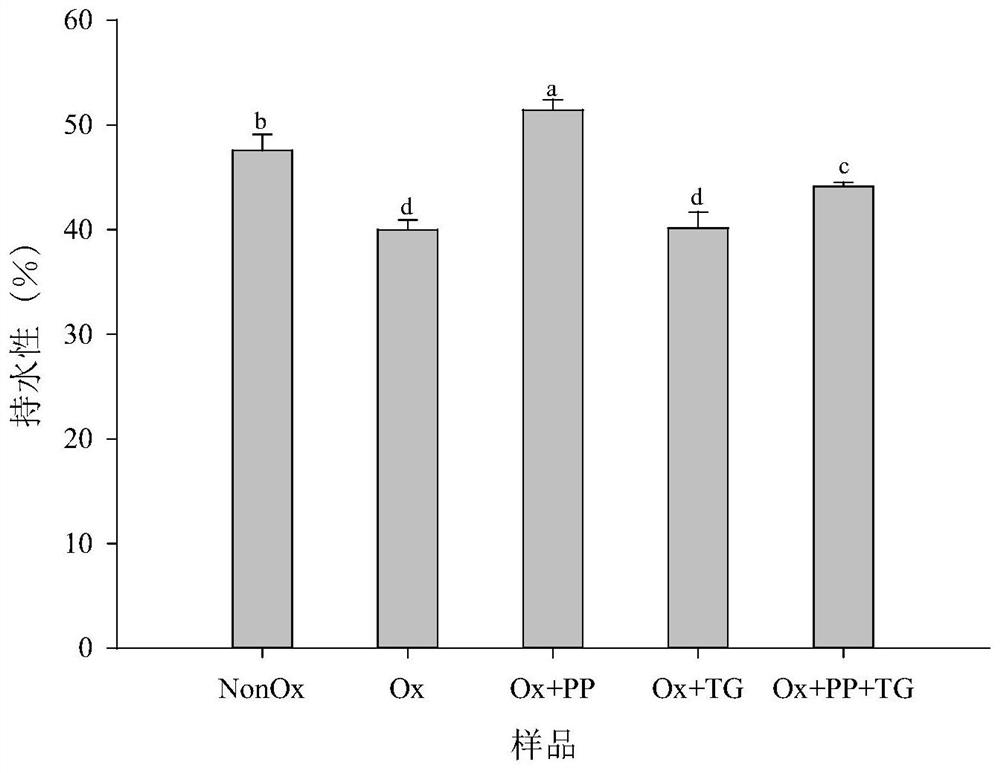Method for repairing performance of oxidative damage protein gel based on PP-TGase
A technology of oxidative damage and protein gel, applied in the direction of peptide preparation methods, chemical instruments and methods, fibrinogen, etc., to achieve the effect of reducing the content of α-helix
- Summary
- Abstract
- Description
- Claims
- Application Information
AI Technical Summary
Problems solved by technology
Method used
Image
Examples
Embodiment 1
[0077] This embodiment 1 provides a method for repairing the gel properties of oxidatively damaged proteins based on PP, comprising the following steps:
[0078] Step 1. Extract pork myofibrillar protein at 0-4°C to prepare myofibrillar protein paste; the preparation process specifically includes the following steps:
[0079] Step 11, cut into strips; remove fat and connective tissue from the pork tenderloin, cut into strips and weigh them for later use.
[0080] Step 12. Separation; place the processed strips of tenderloin in a tissue masher, add four times the volume of stiff liquid, homogenate and mash, and then centrifuge to obtain the primary sediment; add four times the volume to the primary sediment volume of stiff liquid, repeated homogenization and crushing, and centrifuged 3-4 times to obtain a precipitate; wherein, the concentration of NaCl in the stiff liquid was 0.1-0.15mol / L, MgCl 2 The concentration is 2-3mmol / L, Na 2 HPO 4The concentration of EGTA is 10-11mm...
Embodiment 2
[0092] This embodiment 2 provides a method for repairing the gel properties of oxidatively damaged proteins based on TGase, comprising the following steps:
[0093] Step 1. Extract pork myofibrillar protein at 0-4°C to prepare myofibrillar protein paste; the preparation process specifically includes the following steps:
[0094] Step 11, cut into strips; remove fat and connective tissue from the pork tenderloin, cut into strips and weigh them for later use.
[0095] Step 12. Separation; place the processed strips of tenderloin in a tissue masher, add four times the volume of stiff liquid, homogenate and mash, and then centrifuge to obtain the primary sediment; add four times the volume to the primary sediment volume of stiff liquid, repeated homogenization and crushing, and centrifuged 3-4 times to obtain a precipitate; wherein, the concentration of NaCl in the stiff liquid was 0.1-0.15mol / L, MgCl 2 The concentration is 2-3mmol / L, Na 2 HPO 4 The concentration of EGTA is 10-...
Embodiment 3
[0107] This embodiment 3 provides a method for repairing the gel performance of oxidatively damaged proteins based on PP-TGase, comprising the following steps:
[0108] Step 1. Extract pork myofibrillar protein at 0-4°C to prepare myofibrillar protein paste; the preparation process specifically includes the following steps:
[0109] Step 11, cut into strips; remove fat and connective tissue from the pork tenderloin, cut into strips and weigh them for later use.
[0110] Step 12. Separation; place the processed strips of tenderloin in a tissue masher, add four times the volume of stiff liquid, homogenate and mash, and then centrifuge to obtain the primary sediment; add four times the volume to the primary sediment volume of stiff liquid, repeated homogenization and crushing, and centrifuged 3-4 times to obtain a precipitate; wherein, the concentration of NaCl in the stiff liquid was 0.1-0.15mol / L, MgCl 2 The concentration is 2-3mmol / L, Na 2 HPO 4 The concentration of EGTA is...
PUM
 Login to View More
Login to View More Abstract
Description
Claims
Application Information
 Login to View More
Login to View More - R&D
- Intellectual Property
- Life Sciences
- Materials
- Tech Scout
- Unparalleled Data Quality
- Higher Quality Content
- 60% Fewer Hallucinations
Browse by: Latest US Patents, China's latest patents, Technical Efficacy Thesaurus, Application Domain, Technology Topic, Popular Technical Reports.
© 2025 PatSnap. All rights reserved.Legal|Privacy policy|Modern Slavery Act Transparency Statement|Sitemap|About US| Contact US: help@patsnap.com



